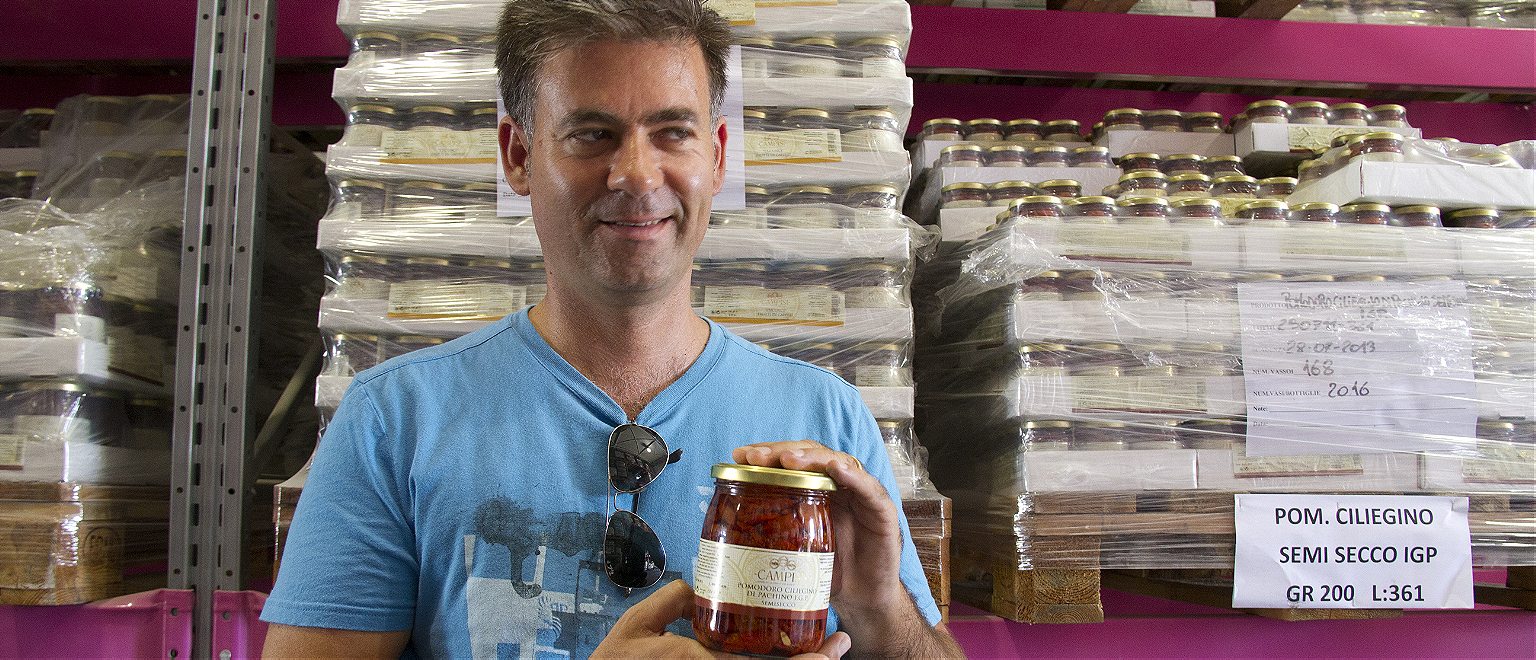Redder than a fire truck, sweeter than a mother’s love, the Pachino tomato holds the secret to Sicilian cuisine.
The sauce starts here. South of Sicily, where the soil is sweet and dense with nutrients and the sun pours down in great rivers of light. Where the espressos get so short they nearly disappear and the toe of the island stretches out across the Ionian Sea toward Africa.
This is where you will find the Pachino tomato, redder than a fire truck, sweeter than a bowl of jelly. The sunburnt hills surrounding Pachino and neighbors Marzamemi and Burgio are carpeted with the twisting vines of the tomato, making this small, sparsely populated corner of the island ground zero for red sauce, and thus the nucleus of Sicilian cuisine.
But the tomato farmers of Pachino weren’t always tomato farmers, at least their forefathers weren’t. Most of the men in the southeast of Sicily made their living fishing for tuna. Come late spring, the Sicilian waters are home to great waves of migrating bluefin tuna. Flush with fat, whole bluefin fillets and belly pieces go into jars and cans that cost five times as much as canned tuna in most countries and tastes 50 times better. Unfortunately, the Japanese, insatiable tuna addicts and ferocious sea-pillagers that they are, soon found Sicily, soon came to understand just how good and cheap its tuna was. Where as family processors in Sicily used to pay 5€ a kilo for tuna, the Japanese now offer up to ten times that price for the bluefin catch, effectively pricing Sicilians out of their own tuna market.
Now most of the business has been streamlined, the canning and bottling factories all but shut down, and the people who used to fillet tuna now pick tomatoes. It’s a tough story to swallow, but not without its silver lining. As good as the tuna may be from these waters, the tomatoes that grow in this soil are even more special: each carries an intense burst of sweetness, with a clean acidic tang that hits you high up in the cheeks and a skin so thin that you wonder how the tomato holds itself together. Each little tomato, no bigger than a golf ball, tastes like a distillation of the Sicilian sun.
“The tomatoes from the top of the plant, those always have the most intense flavor, just like marijuana,” says Paolo Campisi, president of Campisi Conserve. “Those are the ones we make our sauce with.” Paolo is the latest in a family of tomato farmers and tuna fishermen that stretches back six generations. He works in flip flops, rides around on his scooter shouting into his iPhone, and talks with a glint of nostalgia about eating cod sperm with Bizarre Food’s Andrew Zimmern. He’s a modern man with a modern vision for his tomatoes (sexy packaging, online business, international distribution), but with a respect for the beautiful simplicity of his fruit coded in his DNA.

“Tomatoes are very important to the Sicilian people,” he says, pausing for a minute to think, “and these are the best tomatoes in Italy.” Indeed, so good are these tomatoes that Italians from up and down the peninsula now refer to cherry tomatoes simply as Pachino tomatoes.
It’s important to remember that the tomato isn’t just another ingredient to Sicilians; they lie at the heart of everything they eat—whether used to top squishy squares of Sicilian-style pizza, lace a plate of ricotta-stuffed ravioli or add a deep, rustic hue to caponata, that ubiquitous eggplant stew found in every region of the island. Many people in the States use the term “red sauce Italian” as a pejorative, to infer that all of those rosy plates of spaghetti and ziti and rigatoni somehow represent a more vulgar form of “authentic” Italian food, but Sicilian cuisine as we know it would collapse without the pomodoro.
Paolo takes us on a tour of the Campisi plant. Outside, tomatoes are halved and laid out on crates to dry in the sun; inside, great walls of bottles and cans climb to the ceiling of a large, dark warehouse. A new sauce is simmering today, a spin on the Palermitano classic le sarde. The Campisi version features both fresh and sundried tomatoes, the latter to add an extra punch of natural sweetness to the sauce. To that goes fresh and dried sardines, wild fennel, capers, olive oil, plus a hit of dried pepper flakes to keep it frisky. It all bubbles aggressively in a stainless steel cauldron the size of a smart car. I run a plastic spoon through a bowl left out on the counter and a salty, spicy wave of tomato intensity washes over me.
Bad cherry tomatoes—yellow at the base, tasting of iceberg lettuce—in the States and other parts of Western Europe will set you back about $6 per pound. A can of San Marzanos, a great but by comparison tame tomato grown around the Naples area, have become wildly popular around the world in recent years; a single can costs about $4. In Sicily, the best tomatoes you can buy come to about $.50 per pound.
One of Paolo’s main concerns right now: finding someone in the US who will sell his tomatoes. He says he’s made plenty of calls, but in Paolo’s estimation, no one seems to truly understand the Pachino tomato from the south of Sicily. “But how knows,” he says with a shrug of the shoulders. “Maybe one day we’ll be in America.”
Drop it into the comments or send it to us at contact@roadsandkingdoms.com. If we use your recipe in the book, we’ll send you a free copy.